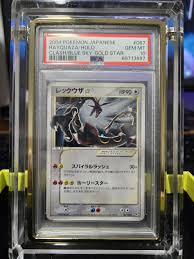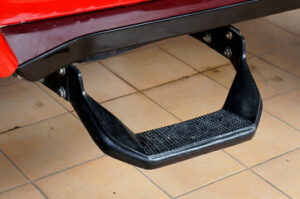There is something quietly thrilling about collecting things you can’t touch. Phantom Display collectibles are changing how people interact with physical objects. These are items that exist in real life but are kept hidden or digitally masked. The owner possesses them, but no one sees them unless allowed.
Unlike traditional collectibles, these pieces challenge the norm of visibility. They live in the realm of mystery and intent. Sometimes, they are purchased only to be locked away. Others are displayed through digital means while the object remains untouched and unseen.
Collectors are drawn to the feeling of secrecy and control. There’s a subtle luxury in having something rare and never revealing it. The value isn’t in public display but in personal possession. This reversal of logic is what fuels the movement.
Phantom collectibles are often highly crafted but stored in invisible vaults. Their display takes place through immersive tech or private environments. This absence makes them feel almost sacred. The mystery becomes part of their story.
This trend is being embraced by those who appreciate minimalism with depth. They want space but not at the cost of sentiment. Owning without showing offers a new kind of prestige. It turns the act of collecting into something deeply personal.
What excites new collectors is the way these objects rewrite the rulebook. There’s no need for a shelf or glass casing. A single object can be valued more for not being seen. This idea breaks away from clutter and shows the power of restraint.
Phantom display collecting also provides an emotional escape. It gives people the chance to build private worlds that hold meaning. It’s not for validation but for introspection. In that quiet place, value becomes more spiritual than monetary.
Some collectors go to lengths to keep their treasures invisible. They may commission custom storage or encryption for digital access. Others mask their items in plain sight through decoy settings. This adds an element of psychological play.
Technology plays a key role in making phantom display collecting possible. Through augmented tools, users can see what’s not physically there. They point their devices and reveal pieces only they can access. It’s a blend of real and imagined realms.
What makes this different from digital collecting is the existence of the real item. The object is tangible and crafted, just hidden. Its display is managed through selective exposure. This makes the experience feel layered and almost cinematic.
Collectors are now seeking items designed specifically for hidden display. These items often carry themes of secrecy, legacy, and identity. They are meant to provoke thought without being obvious. Their silence becomes their loudest feature.
As a movement, phantom collecting disrupts traditional museum-like habits. No one is invited to admire the piece unless chosen by the owner. This dynamic creates both curiosity and frustration. It elevates the idea of ownership to something abstract.
This practice also speaks to the desire to detach from constant attention. In a noisy world, hiding something beautiful becomes a form of rebellion. It says not everything has to be shared to have meaning. Silence itself becomes valuable.
New creators are crafting items meant only for phantom display. Their work may never be photographed or promoted. This purity appeals to those seeking connection beyond trends. It’s about finding truth in secrecy.
Collectors often describe a sense of freedom when engaging with this practice. There’s no pressure to impress or prove. Just the satisfaction of knowing what lies within your vault. That feeling is unmatched by public admiration.
In private communities, phantom displays are shared through stories, not visuals. Owners talk about how they acquired the item but never reveal it. This creates bonds based on trust and imagination. The item lives in words rather than sight.
There are even rituals involved in how phantom items are revealed. Some owners stage intimate showings for a single person. Others document the item’s presence through poetic logs or encrypted files. These methods feel theatrical and emotional.
This form of collecting is not always about luxury. Some items are deeply personal, like heirlooms or symbolic art. Their hiding is meant to protect memory rather than prestige. They hold space for healing and remembrance.
People who feel overwhelmed by materialism often turn to this practice. It allows them to engage with art or beauty without physical clutter. The object becomes both there and not there. It rests in a liminal space between being and concealment.
Phantom collectibles also allow for anonymity. Owners can avoid unwanted attention while still engaging in a passion. The private nature of the collection becomes a boundary. It offers a sense of control in a hyper-visible world.
Collectors sometimes develop entire systems for rotating what is temporarily revealed. This adds to the dynamic flow of the experience. The absence of permanent display prevents the objects from becoming static. Everything stays in motion.
In design circles, there’s a growing appreciation for this invisible aesthetic. Designers now consider how to make items beautiful even when hidden. They are built for presence, yet meant for absence. It’s an artistic contradiction.
The philosophy behind this collecting method is not new, but the expression is. Ancient cultures also had sacred objects never meant to be seen. These items were kept in private spaces and treated with reverence. Today’s practice mirrors that tradition.
Some argue this trend is a response to overexposure. In a world of over-sharing, the idea of having something only you know feels radical. It shifts power back to the individual. It redefines what it means to own something meaningful.
Others suggest that phantom display collecting challenges consumerism. It questions the need to show what we have. It removes comparison from the equation. All that remains is the personal relationship with the object.
This movement is slowly influencing art collectors, designers, and thinkers. They are asking, “What if the best part of the object is not seeing it?” This question opens new conversations about value, identity, and memory. It becomes a philosophical act.
Collectors are encouraged to write narratives about their unseen items. These narratives replace visual proof. The story becomes the display. It forces deeper engagement with why the object matters.
Even young collectors are starting to embrace this trend. It allows them to push against visual pressure online. Their collections are acts of quiet rebellion. They are not defined by likes or shares.
This growing movement remains fluid and undefined. It resists rules and standards. Each collector creates their own logic of hiding and revealing. The unpredictability is what makes it exciting.
Phantom display collecting shows how mystery and scarcity can fuel connection. It challenges people to feel instead of see. It honors things not by showcasing them but by keeping them sacred. This shift is emotional, creative, and deeply human.
As more people seek meaning beyond visibility, this trend may grow stronger. It aligns with a need for depth in a fast, surface-driven world. Objects become portals rather than possessions. Their silence holds weight.
The art of not displaying is a deliberate choice. It makes collecting less about ego and more about soul. Phantom displays carry unseen stories, waiting to be discovered by the chosen. And sometimes, the most beautiful thing is what remains hidden.

